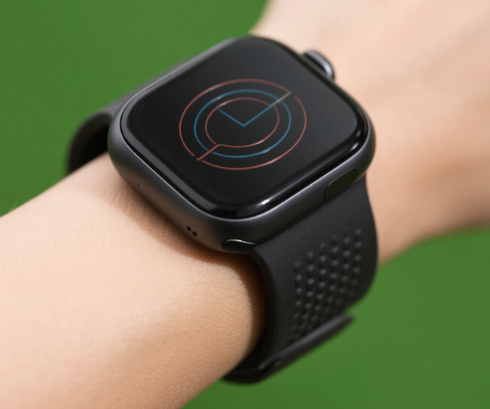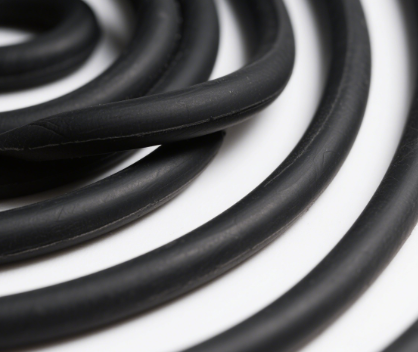The Application of Conductive Silicone Rubber in the Field of Unmanned Aerial Vehicles (UAVs)
2025/06/17
0
Abstract
This paper explores the application of conductive silicone rubber in the field of unmanned aerial vehicles (UAVs). By analyzing the unique properties of conductive silicone rubber, such as electrical conductivity, flexibility, and environmental resistance, it demonstrates how these properties meet the specific requirements of UAVs in different components and systems. The applications include electromagnetic shielding, electrical connection, sensor technology, and structural sealing in UAVs, highlighting the important role of conductive silicone rubber in improving the performance, reliability, and safety of UAVs.
1. Introduction
Unmanned aerial vehicles have witnessed rapid development in recent years, with their applications expanding to various fields such as military, agriculture, photography, and environmental monitoring. As the functionality and complexity of UAVs increase, the demand for high – performance materials with multiple functions has also grown. Conductive silicone rubber, a composite material that combines the excellent flexibility, heat resistance, and chemical stability of silicone rubber with electrical conductivity, has emerged as a material with great potential for UAV applications. This paper aims to discuss in detail the application scenarios and advantages of conductive silicone rubber in UAVs.
2. Properties of Conductive Silicone Rubber
2.1 Electrical Conductivity
Conductive silicone rubber is made conductive by adding conductive fillers, such as carbon black, carbon nanotubes, or metal powders, to the silicone rubber matrix. The conductivity of the material can be adjusted by controlling the type, content, and distribution of the conductive fillers. This electrical conductivity allows conductive silicone rubber to play a crucial role in electrical – related applications in UAVs, such as electrical connection and electromagnetic shielding.
2.2 Flexibility and Elasticity
Silicone rubber itself has excellent flexibility and elasticity, and these properties are well – maintained in conductive silicone rubber. This flexibility enables it to adapt to the complex shapes and dynamic movements within UAVs, ensuring long – term stable performance without cracking or deforming easily. For example, in areas where components need to move relative to each other or where the UAV structure may experience vibration and shock during flight, conductive silicone rubber can maintain its integrity and functionality.
2.3 Environmental Resistance
Conductive silicone rubber inherits the good environmental resistance of silicone rubber. It has excellent resistance to high and low temperatures, UV radiation, moisture, and chemical corrosion. In UAV applications, UAVs often operate in various harsh environmental conditions. The high – temperature resistance allows it to function properly in the engine – adjacent areas or during high – intensity flight operations, while the low – temperature resistance ensures that it does not become brittle and lose its performance in cold environments. Its resistance to UV radiation, moisture, and chemicals extends the service life of UAV components and improves the overall reliability of the UAV.
3. Applications of Conductive Silicone Rubber in UAVs
3.1 Electromagnetic Shielding
UAVs are equipped with a large number of electronic devices, including communication systems, navigation systems, and control systems. These electronic devices are susceptible to electromagnetic interference (EMI) from the external environment, and at the same time, they may also generate electromagnetic radiation that can interfere with other devices. Conductive silicone rubber is widely used in UAVs for electromagnetic shielding. It can be used to seal the gaps between the electronic enclosures of UAVs, such as the fuselage and the avionics compartments. The conductive network formed by the conductive fillers in the silicone rubber can effectively block and absorb electromagnetic waves, preventing EMI from entering the internal electronic devices and reducing the electromagnetic radiation emitted by the UAV, thus ensuring the normal operation of the electronic systems and reducing the interference with other equipment in the surrounding environment.
3.2 Electrical Connection
In UAVs, reliable electrical connection is essential for the proper functioning of various components. Conductive silicone rubber can be used to make flexible electrical connectors. These connectors can provide good electrical conductivity while maintaining flexibility, which is very suitable for applications where there are relative movements between components. For example, in the connection between the UAV’s wings and the fuselage, where the wings may have some degree of movement during flight, conductive silicone rubber connectors can ensure stable electrical connection without being damaged by the movement. In addition, conductive silicone rubber can also be used to make electrical contacts in some sensors and actuators, providing a stable electrical interface for signal transmission and power supply.
3.3 Sensor Technology
Conductive silicone rubber has great potential in UAV sensor technology. Due to its conductivity and flexibility, it can be used to fabricate sensors that can detect various physical quantities. For example, pressure – sensitive conductive silicone rubber can be used to make pressure sensors. When the UAV’s landing gear touches the ground or when the wings are subjected to aerodynamic forces, the pressure – sensitive conductive silicone rubber can change its electrical resistance according to the magnitude of the pressure, and this change in resistance can be converted into a pressure signal for measurement and control. In addition, conductive silicone rubber can also be used in strain sensors. By attaching strain – sensitive conductive silicone rubber to the key structural parts of the UAV, the deformation and stress of these parts can be monitored in real – time during flight, which is of great significance for ensuring the structural safety of the UAV.
3.4 Structural Sealing
In addition to its electrical – related functions, conductive silicone rubber also plays an important role in the structural sealing of UAVs. It can be used to seal the joints and seams of the UAV’s fuselage, wings, and other components, preventing the ingress of dust, moisture, and other foreign substances. This not only protects the internal components of the UAV from damage but also helps to maintain the aerodynamic performance of the UAV. The good flexibility and adhesion of conductive silicone rubber ensure that it can form a reliable seal even in complex – shaped joints, and its environmental resistance properties ensure the long – term effectiveness of the seal.
4. Challenges and Future Developments
4.1 Challenges
Although conductive silicone rubber has many advantages in UAV applications, there are still some challenges. One of the main challenges is the improvement of conductivity without sacrificing other properties. Increasing the content of conductive fillers can enhance conductivity, but it may also reduce the flexibility, elasticity, and processability of the silicone rubber. Another challenge is the long – term stability of conductivity. In some harsh environmental conditions, the conductive fillers may be affected, leading to a decrease in conductivity over time. Additionally, the cost of some high – performance conductive silicone rubber materials is relatively high, which may limit their wider application in UAVs, especially in low – cost UAV models.
4.2 Future Developments
In the future, research on conductive silicone rubber for UAV applications is expected to focus on developing new types of conductive fillers and composite materials. For example, the development of novel conductive nanofillers with high conductivity and good dispersion in the silicone rubber matrix can help improve the conductivity of the material while maintaining its excellent mechanical and environmental properties. At the same time, efforts will be made to improve the manufacturing process of conductive silicone rubber to reduce costs and enhance the long – term stability of conductivity. In addition, with the continuous development of UAV technology, new application requirements for conductive silicone rubber will also emerge, and researchers will need to develop more customized conductive silicone rubber materials to meet these specific needs.
5. Conclusion
Conductive silicone rubber has a wide range of applications in the field of unmanned aerial vehicles. Its unique properties such as electrical conductivity, flexibility, and environmental resistance make it an ideal material for electromagnetic shielding, electrical connection, sensor technology, and structural sealing in UAVs. Although there are still some challenges in its application, with the continuous progress of material science and manufacturing technology, conductive silicone rubber is expected to play an even more important role in the future development of UAVs, contributing to the improvement of UAV performance, reliability, and safety.
















